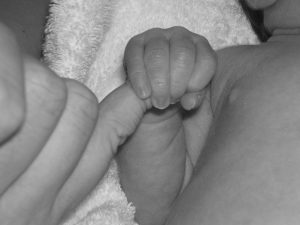The Family and Medical Leave Act (FMLA) is a federal law that provides job security to an employee who is absent from work because of the employee’s own serious health condition or to care for specified family members with serious health conditions, as well as for the birth of a child and to care for a newborn child, or because of the placement for adoption or foster care of a child with the employee. 29 USC § 2601 et seq.
The California Family Rights Act (CFRA) is the California equivalent of FMLA and provides similar protections. Gov.C. § 12900 et seq. Under FMLA and CFRA, both the mother and father are entitled to leave to bond with the newborn even if the newborn does not have a serious health condition. See 29 CFR § 825.120(a)(2).
The New Parent Leave Act (NPLA), which became effective on January 1, 2018, applies to smaller employers with 20-49 employees. (FMLA and CFRA cover 50 or more employees). Gov. C. § 12945.6. The NPLA requires employers with at least 20 employees to provide up to 12 workweeks of parental leave for eligible employees to bond with a new child within one year of the child’s birth, adoption or foster care placement.

The qualifications for leave under FMLA, CFRA, and NPLA are generally the same. Employees are eligible to take child care or bonding leave if they have worked for an employer for 12 months, have at least 1,250 hours of service with the employer in the prior 12-month period, and who work at a worksite in which the employer employs at the qualified number of employees within 75 miles of the employee.
The NPLA does not provide extra leave for employees already eligible to take baby-bonding leave under the CFRA or the FMLA. Employees already eligible to take parental bonding leave under the CFRA and/or the FMLA are not eligible to take NPLA leave (Gov.C. § 12945.6(c)). Employees may take California Pregnancy Disability leave in addition to NPLA leave, if the employee is otherwise qualified for that leave. [Gov.C. § 12945.6(b)]
Leave under FMLA, CFRA, and NPLA is unpaid unless available paid time off is taken (e.g., vacation, paid sick time or paid personal time off) and/or unless disability or other income replacement benefits are available (e.g., California State Disability Insurance, California Paid Family Leave, workers’ compensation payments, and/or payments from an employer’s short-term or long-term disability pay plan).
Since bonding time does not require a medical condition, it can be taken at any time but must be concluded within one year of the birth. 29 CFR § 825.120(a)(2). Both men and women are eligible for leave for the birth and to care for a newborn. 29 CFR § 825.120(a)(1). Leave taken before the birth of a child is FMLA leave for the mother’s serious health condition, not leave for the birth of a child. 29 CFR § 825.120(a)(4).
It is important to note that there is a time limit on the bonding leave – one year after the birth or adoption. Therefore, if the employee has a child after six months of service, the window for bonding leave would be six months after leave qualification. This is the only type of leave that has such a limitation. Another limitation is that employers may limit leave rights if a husband and wife are employed by the same employer. Under these circumstances, the husband and wife are allotted a combined 12 weeks.
 Southern California Employment Law Blog
Southern California Employment Law Blog








